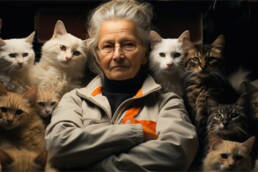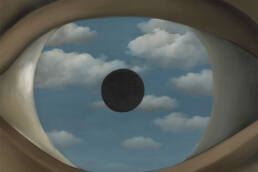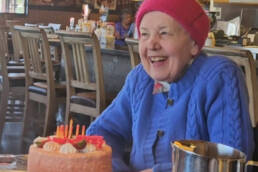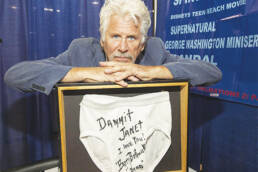Valentine’s Day, also called Saint Valentine’s Day, is celebrated annually on February 14. It originated as a Christian feast day honoring a martyr named Valentine, and through later folk traditions it has also become a significant cultural, religious and commercial celebration of romance and love in many regions of the world.
Everyone loves a good love story, but the history of Valentine’s Day is a bit different from the romanticized version of the holiday recognized today. The earliest possible origin story of Valentine’s Day is the pagan holiday Lupercalia, which horribly celebrated fertility. Men would strip naked and sacrifice a goat and dog. Young boys would then take strips of hide from the sacrificed animals and use it to whip young women, to promote fertility. Some trace Valentine’s Day origins to a Christian effort to replace the pagan fertility festival that has been dated as far back as the 6th century B.C. The day became associated with romantic love in the 14th and 15th centuries, when notions of courtly love flourished, apparently by association with the “lovebirds” of early spring.
In spite of the pagan tradition, 18th-century England’s Valentine’s Day grew into an occasion for couples to express their love for each other by presenting flowers, offering confectionery, and sending greeting cards (known as “valentines”). Valentine’s Day symbols that are used today include the heart-shaped outline, doves, and the figure of the winged cupid. In the 19th century, handmade cards gave way to mass-produced greetings. In Italy, Saint Valentine’s keys are given to lovers “as a romantic symbol and an invitation to unlock the giver’s heart.”
While the custom of sending cards, flowers, chocolates and other gifts originated in the UK, Valentine’s Day still remains connected with various regional customs in England. In Norfolk, a character called “Jack” Valentine knocks on the rear door of houses, leaving sweets and presents for children. Although he was leaving treats, many children were scared of this mystical person.
In Slovenia, Saint Valentine or Zdravko was one of the saints of spring, the saint of good health and the patron of beekeepers and pilgrims. A proverb says that “Saint Valentine brings the keys of roots”. Plants and flowers start to grow on this day. It has been celebrated as the day when the first work in the vineyards and in the fields commences. It is also said that birds propose to each other or marry on that day.
On the United States mainland, about 190 million Valentine’s Day cards are sent each year, not including the hundreds of millions of cards school children exchange. Valentine’s Day is a major source of economic activity, with total expenditures topping $18.2 billion in 2017, or over $136 per person. In 2019, a survey by the National Retail Federation found that over the previous decade, the percentage of people who celebrate Valentine’s Day had declined steadily. From their survey results, they found three primary reasons: over-commercialization of the holiday, not having a significant other, not being interested in celebrating it, and today not having the economic resources.
Today, the increase in use of the Internet which started around the turn of the millennium is creating new traditions. Every year, millions of people use digital means of creating and sending Valentine’s Day greeting messages such as e-cards, love coupons and printable greeting cards. Valentine’s Day is considered by some to be a Hallmark holiday due to its commercialization.
Many other countries have adopted Valentine’s Day. India is one of those countries. According, in February 2023, the Animal Welfare Board of India appealed to Indians to celebrate February 14 as “Cow Hug Day” for “emotional richness” and to increase “individual and collective happiness.” They referenced the sacredness of cows as being equivalent to one’s mother in Indian culture. They were expressing that their culture was on the verge of extinction due to the western culture influence. According to a CNN photo series report in 2017, Indian women were sporting cow masks which portrayed a society where cows were more valued than women. However, the move failed and later retracted after it prompted a rush of internet cartoons and jokes by the media.
Clearly Valentine’s Day was not originally formed around romantic love, but today through much transformation it has become a holiday about romance and love. This development has occurred through authors such as Chaucer and Shakespeare. By the mid-18th century, it was routine for friends and lovers to exchange small tokens and notes on Valentine’s Day. In the 19th century, the Industrial Revolution helped make printed Valentine’s Day cards the hot new thing. The explosion of love continued in the 19th century with the creation of the first heart-shaped box of chocolates—a quintessential symbol of Valentine’s Day. To make things even sweeter, a New England company started to produce the earliest version of conversation hearts, which are still popular to this day. Then in 1913, Hallmark Cards of Kansas City began mass-producing valentines. The rest, as they say, is history!
I have given you a little history of Valentine’s Day which is now the day of love. Love is critical in all of our lives and expressing it is really important. Having such a day that focuses on love helps, but we need to live it every day to the best we can. Expressing your loving feelings to partners, family, and friends helps you to live a full and healthy life. What better way to “add life to years”.
Lawrence J. Weiss, Ph.D. is CEO of the Center for Healthy Aging. Dr. Weiss welcomes your comments on this column. Write to him at larryjweiss@gmail.com or c/o Center for Healthy Aging, 11 Fillmore Way, Reno, NV 89519.







































